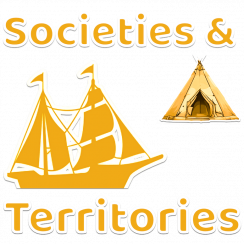During the 1980s the Mi’kmaq were living in the provinces of New Brunswick, Nova Scotia, Prince Edward Island, Newfoundland and Quebec. There were about 2300 Mi’kmaq with the majority living in Gaspé. As a matter of fact, the name of this region comes from the Mi’kmaq word “Gespegeoag.”
The Gaspé Peninsula is located at Quebec’s most eastern point. It is surrounded by water: to the north by the Saint Lawrence River, to the south by Baie-des Chaleurs and to the east by the Gulf of Saint Lawrence. Its territory consists of mountains, hills and water. There is a variety of different landscapes: the coast with its capes, steep cliffs and large bays (Bay of Gaspé and Baie-des-Chaleurs), the Chic-Choc Mountains which are part of the Appalachian Mountains, then west, the Matapedia Valley where the forests dominate.
A little history
In the mid-19th century, forest and agriculture industries started to infringe on the Mi’kmaq’s hunting and fishing territories. Like other Indigenous Peoples of Lower Canada (Quebec), the Mi’kmaq asked the government to protect their land. In 1853, the Restigouche Reserve was created. Lands that had previously been granted to the Mi’kmaq in Maria also became reserved land.
Reserves, like those located in Maria and Restigouche, were created by the federal government for Indigenous Peoples. For their part, the Mi’kmaq who had settled in the Bay of Gaspé in 1675 chose to live off-reserve among the non-Indigenous population of Gaspé and its surrounding areas.
The reserves represented just a fraction of the ancestral territory. As a result, in 1980, the Maria Reserve covered an area of only 1.6 km2; the Restigouche Reserve covered 36.4 km2.
Mi’kmaq place names
Mi’kmaq place names, which describe the characteristics of the territory, have survived until today. Anticosti takes its name from the word “Natigosteg” meaning “Advanced Earth”; Quebec, “Gepe’q” meaning “Where the River Narrows”; Matane, “Mantanne” meaning “Beaver Pond”; Tadoussac of “Giatosog” Between the Rocks, and Rimouski meaning “The Land of the Moose.”
Author: Based on texts from the Récit de l’univers social. Adapted with additions by LEARN.





